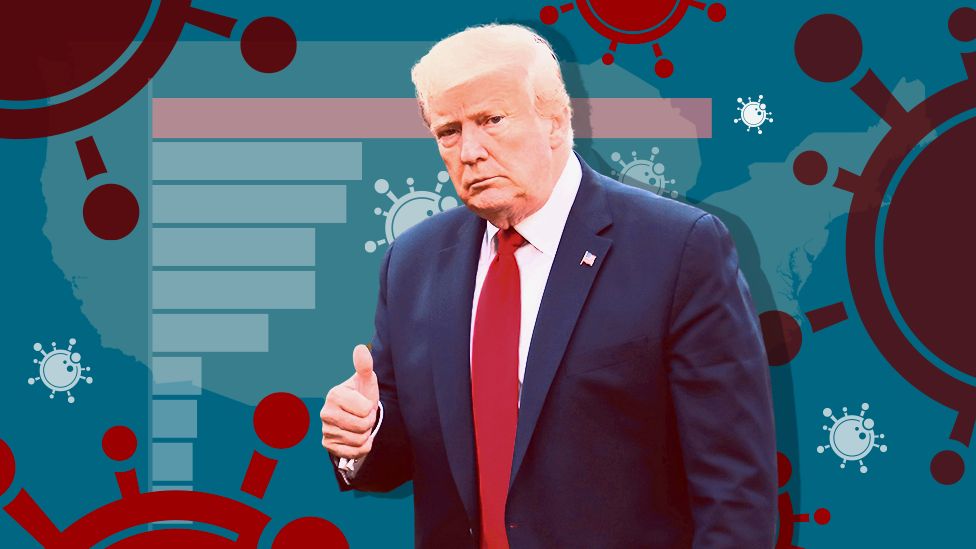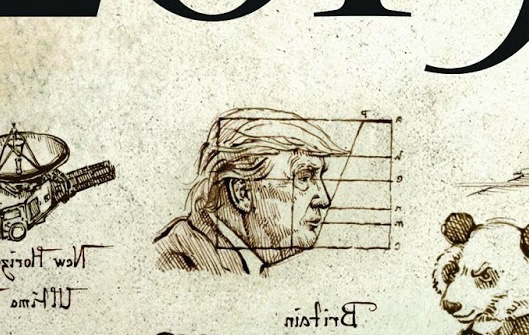
A Perspective Beyond the Surface
This is not just a narrative—it’s a battle between the enlightened and the conservatives.
In 2019, the renowned magazine The Economist published a cover filled with cryptic imagery. Among the symbols, the face of Donald Trump stood out as a representation of facial recognition technology. According to conspiracy theories, the elite use such imagery to communicate their plans.

The Face of 2019
An artistic representation from The Economist 2019 cover, blending the concept of identity with technological and political themes, symbolizing the era of facial recognition and global influence.
China was the first country to adopt facial recognition on a mass scale, integrating it into banks, businesses, and even public spaces. The Social Credit System became a tool of control: rewarding good behavior and punishing infractions. Citizens couldn’t avoid the law without facing repercussions that affected their financial and social standing.
In the West, the rise of Face ID in the USA was unprecedented. Imagine a system so perfect that every movement, transaction, and action was monitored and recorded. A system that knows your debts, tracks traffic violations, and recognizes the minutest details of your behavior.
The Struggle for Control
But not everyone welcomed this vision of a global surveillance state. Some believe Bill Gates, a prominent figure in technology, resisted the rise of facial recognition because the technology didn’t belong to him. Microsoft launched campaigns advocating for “a world without discrimination,” though the deeper meaning behind these messages remained unclear.
In reality, it appeared to be a technological war: Face ID (Apple) versus ID2020 (Microsoft). Both sought to dominate global identification systems, but the pandemic shifted the balance. With the outbreak of COVID-19 in Wuhan, masks became mandatory worldwide, effectively disrupting facial recognition technology. This, in turn, diminished its influence as a security measure.
In 2020, The Economist published another cryptic cover featuring an eye chart. The chart seemed to predict that events unfolding before our very eyes would remain hidden in plain sight. The word “Trump” appeared prominently, followed by “Exit.”

That same year, Trump made a series of controversial moves: creating the Space Force, separating the U.S. from the WHO, and ending his presidency. The ID2020 conspiracy gained momentum, alleging a vaccine with a microchip designed to track individuals. This sparked debates over the ethics of surveillance and global health strategies.
When the WHO announced its vaccine, Trump withdrew U.S. funding, cutting 20% of the organization’s budget. Shortly after, the Black Lives Matter movement gained traction following George Floyd’s death. Conspiracy theorists speculated that the movement was politically motivated, funded by the WHO and the Democratic Party to undermine Trump’s re-election campaign.
The defeat of Trump in the 2020 election raised questions. Where did the Black Lives Matter activists go after his presidency ended? Discrimination persisted, yet the movement’s prominence faded.
Meanwhile, rumors circulated that Trump had uncovered evidence of advanced extraterrestrial life and technologies but was silenced across social media platforms. Whether this was true or merely a diversion remains a mystery.
The ID2020 plan faltered due to a global shortage of microchips and the widespread use of masks. Trump’s withdrawal of U.S. support for the WHO disrupted plans for a unified global vaccine and digital ID system. But the question remains: What is the next move for the global elite?
Will they push for a society where individuals are rewarded for their moral character? For some, this would be a utopia; for others, a dystopian nightmare.
The Present and Beyond
Today, in a world teetering between chaos and order, the elite’s plans evolve in ways we cannot yet comprehend. The rise of Artificial Intelligence, quantum computing, and neural interfaces suggests that surveillance is moving beyond physical recognition.
Consider Neuralink, Elon Musk’s brain-computer interface, which aims to merge human consciousness with machines. Could this be the next step in controlling humanity? What happens when our very thoughts are accessible to external systems?
Simultaneously, the global digital currency revolution, led by central banks, hints at a future where financial independence is a thing of the past. With every transaction traceable, economic freedom may become a relic of history.
And what of the extraterrestrial question? Recent government disclosures about unidentified aerial phenomena (UAPs) spark further intrigue. Are we witnessing a slow unveiling of truths long hidden? Or is this another distraction to keep us from questioning the systems being built around us?
As we move into 2025 and beyond, the lines between freedom and control blur further. The elite’s ultimate goal remains shrouded in mystery, but one thing is clear: the war for global dominance is far from over.
The question is not if the next wave of control mechanisms will arrive but when—and whether we’ll see it coming before it’s too late.











